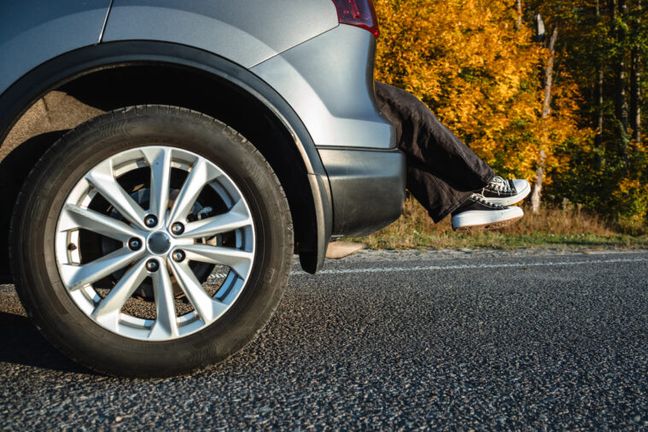Introduction
That is the question which was presented to the Federal District Court in the Northern District of Illinois by Scottsdale Insurance Company (“plaintiff”) in an action against American English, LLC (“defendant”) and Bessie Salter.[i] The case involved personal bodily injury liability coverage.
The Facts in The Underlying Complaint
In the Circuit Court of Cook County, Illinois, Bessie Salter filed a lawsuit against defendant, alleging injuries after being struck by a wheeled cart being unloaded from a van owned by defendants. Defendant filed a claim with plaintiff under their Commercial General Liability (“CGL”) insurance policy. The insurance company denied the claim, stating it had no duty to defend or indemnify the lawsuit under the terms of the CGL’s Auto Exclusion because it precludes coverage for bodily injury arising out of the “use” of a covered automobile.
What Was the Motor Vehicle Exclusion, and Why Did It Apply?
The policy defines “use” to include loading and unloading. “Loading or unloading” is specifically defined within the policy:
- After it is moved from the place where it is accepted for movement into or onto an . . . “auto”;
- While it is in or on an . . . “auto”; or
- While it is being moved from an . . . “auto” to the place where it is finally delivered; but “loading or unloading” does not include the movement of property by means of a mechanical device, other than a hand truck, that is not attached to the . . . “auto”.[ii]
The policy’s Auto Exclusion does not provide coverage for bodily injury of any claims involving the ownership, maintenance, use, or entrustment of others of any auto owned, operated by, rented, or loaned to any insured, including operation, loading, and unloading. The exclusion also applies if there are claims against any insured which allege negligence or other acts that caused bodily injury involving the supervision, hiring, employment, training, or monitoring of others by that insured.
Plaintiff alleges the Auto Exclusion applies because the van was being unloaded by defendant’s agent, who plaintiff alleges negligently lost control of the cart. At the time the cart struck her, it was not electrically powered by a mechanical device when it rolled off the van.
Defendant argues insurance coverage should not be denied because there was no nexus or connection between the accident, injury, the ownership, use, or maintenance of the vehicle. The Auto Exclusion does not apply because the property being loaded or unloaded was being moved by a mechanical device not attached to the automobile. Salter was not struck by the vehicle, and the agent was not behind the wheel when the injury occurred. The injuries were not connected to the vehicle’s use or purpose. The vehicle’s location was incidental to the conduct that caused the injury.[iii]
By the agreement of the parties, this case comes down to contract principles and interpretation of the party’s intent and meaning expressed in the entire policy under Illinois law. If the drafter of the contract uses terms and language which are vague and unclear, the interpretation will be construed strictly against the drafter.[iv] “The allegations must be liberally construed in favor of the insured.”[v] In fact, “‘[a]ny doubts about the duty to defend are resolved in favor of the insured.’”
The Court focused on the plain language and meaning of the policy’s term “use” of the vehicle and if it is reasonably connected to the vehicle’s purpose and observed that the Illinois Supreme Court defines “use of an automobile” as “its employment for some purpose of the user.”[vi]
Under the Auto Exclusion in the plaintiff’s policy, “use” includes operation, loading, and unloading. It also includes coverage for injuries caused by the negligent use of the vehicle by the insured or insured’s agent, which includes loading or unloading, in this case carts, that causes bodily injury. The court determined the transporting, loading, and unloading of the equipment by the agent in the company’s van is connected to the direct use of the vehicle for the company’s central purpose and was not incidental to Salter’s alleged injuries.
What Did the Federal Magistrate Judge Say About Defending the Policy Holder?
The defendant’s argument that there must be a causal connection between the use and the accident or injury for coverage to apply failed because it only restated the allegation Salter’s injuries occurred from defendant’s operation or use of the motor vehicle. The court determined that Scottsdale did not owe a duty to defend or indemnify the defendant and granted Scottsdale’s motion for judgment on the pleadings.[vii]
Takeaway
In most cases, an insurer must defend and indemnify the insured against claims and lawsuits under the terms of the policy. Even if one claim is covered, “the insurer has a duty to defend the entire suit.”[viii] “Under Illinois law, ‘[a]n insurer’s duty to defend is broader than its duty to indemnify.”[ix]
However, in some cases, an insurer can refuse to defend the insured if the allegations of the underlying complaint preclude any possibility of coverage. If an exclusion applies, the insurer may not have a duty to defend and indemnify the insured subject to terms within the insurance policy. As a reminder, review the policy’s terms, coverage provisions, and exclusions to verify the scope of coverage afforded.
Keep Reading
More by this author
Sources
[i] “Defendant” in this article refers to only American English, LLC, not Bessie Salter.
[ii] Scottsdale Insurance Co. v. American English LLC et al., 2023 WL 5348765; Auto Exclusion. Compl. Ex. A at 26, ¶ 11.
[iii] Mount Vernon Fire Ins. Co. v. Heaven’s Little Hands Day Care, 343 Ill. App. 3d 309 (1st Dist. 2003).
[iv] Valley Forge Ins. Co. v. Swiderski Elecs., Inc., 223 Ill. 2d 352, 361 (2006). “Like any contract, an insurance policy is to be construed as a whole, giving effect to every provision, if possible, because it must be assumed that every provision was intended to serve a purpose.”
[v] Federated Mut. Ins. Co. v. Coyle Mech. Supply Inc., 983 F.3d 307, 314 (7th Cir. 2020).
[vi] Schultz v. Illinois Farmers Ins. Co., 237 Ill. 2d 391 (2010).
[vii] Northbrook Prop. & Cas. Co. v. Transp. Joint Agreement, 194 Ill. 2d 96, (2000)); see Pactiv Corp. v. Nat’l Union Fire Ins. Co., 179 F. Supp. 3d 803, 808 (N.D. Ill. 2015). See also Scottsdale Ins. Co v. Am. English, 23 C 28 (N.D. Ill. Aug. 21, 2023) (“An underlying complaint’s vague allegations and legal labels, without supporting facts, do not trigger a duty to defend.”)
[viii] Mesa Labs., Inc. v. Fed. Ins. Co., 994 F.3d 865, 868 (7th Cir. 2021).
[ix] Federated Mut. Ins. Co. v. Coyle Mech. Supply Inc., 983 F.3d 307, 314 (7th Cir. 2020).

 Author: Scott Ruksakiati
Author: Scott Ruksakiati
 Editor: Grace Shuman
Editor: Grace Shuman
 Cannabis Workers Allege Quota to Trim 4 Pounds a Day Violates the California Labor Code
Cannabis Workers Allege Quota to Trim 4 Pounds a Day Violates the California Labor Code
 The Ninth Circuit Reminds Us: Every Word Matters
The Ninth Circuit Reminds Us: Every Word Matters
 NO WAY, PRO SE! The Consequences of Abusing the Judicial System as a Pro Se Litigant in Colorado
NO WAY, PRO SE! The Consequences of Abusing the Judicial System as a Pro Se Litigant in Colorado
 Victim of Financial Mismanagement or Unlawful Retaliation? New Jersey City University Program Founder Claims School Retaliated After Reporting Alleged Sexual Harassment
Victim of Financial Mismanagement or Unlawful Retaliation? New Jersey City University Program Founder Claims School Retaliated After Reporting Alleged Sexual Harassment
 “Real Housewives” Gets a Reality Check
“Real Housewives” Gets a Reality Check
 Missing a Chapter: Insufficiency of Expert Deposition Testimony in Medical Malpractice Litigation
Missing a Chapter: Insufficiency of Expert Deposition Testimony in Medical Malpractice Litigation
 Crash Course: Why Summary Judgment Misses the Mark in Illinois Multi-Cause Limousine Crash Collision
Crash Course: Why Summary Judgment Misses the Mark in Illinois Multi-Cause Limousine Crash Collision
 Bitter Truths: Lead, Cadmium, and Defective Pleadings in California Chocolate Class Action
Bitter Truths: Lead, Cadmium, and Defective Pleadings in California Chocolate Class Action
 The Law of Unintended Consequences: Including Insurance Brokers in Litigation Strategy Communication May Waive the Attorney-Client Privilege
The Law of Unintended Consequences: Including Insurance Brokers in Litigation Strategy Communication May Waive the Attorney-Client Privilege
 Start Small, but Think Big: Attorneys’ Fees Can Add Up
Start Small, but Think Big: Attorneys’ Fees Can Add Up
 There’s No Such Thing as A Free Bite
There’s No Such Thing as A Free Bite
 Not All Arbitration Clauses Are Created Equally
Not All Arbitration Clauses Are Created Equally
 Exclusivity Provisions of Illinois Workers Compensation Act Do Not Shield Employer From Claims Under Biometric Information Privacy Ac
Exclusivity Provisions of Illinois Workers Compensation Act Do Not Shield Employer From Claims Under Biometric Information Privacy Ac
 Protections Against Implied Warranty of Habitability Claims Broadened in Illinois
Protections Against Implied Warranty of Habitability Claims Broadened in Illinois
 Illinois Practice Note: Amendment to Rule 23
Illinois Practice Note: Amendment to Rule 23
 Can a Home Office Establish Venue in Illinois?
Can a Home Office Establish Venue in Illinois?